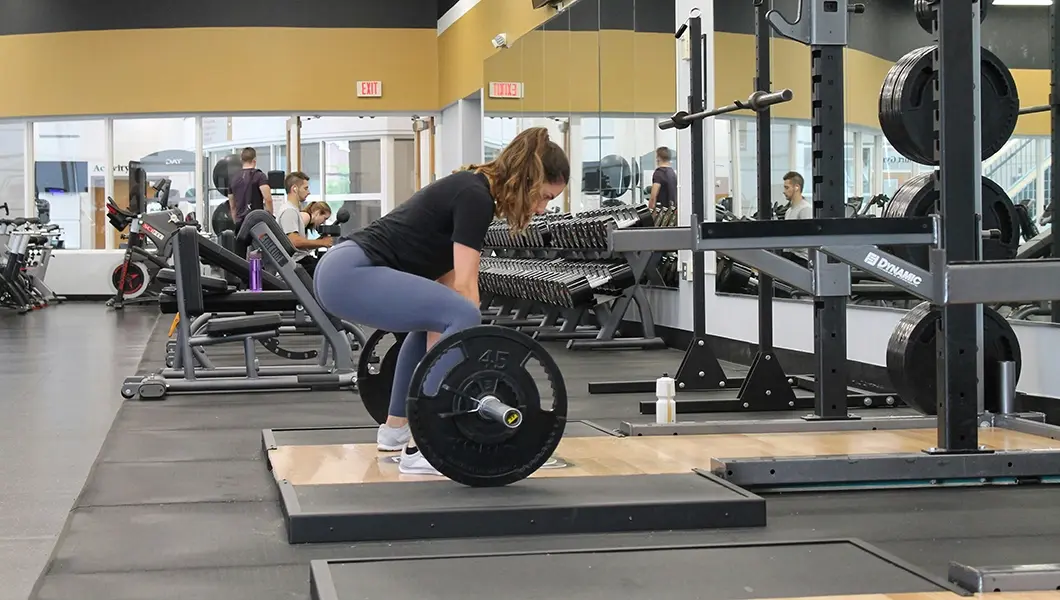A Guide To Strength Training for Endurance Athletes: Building Power and Resilience
As an endurance athlete, I understand the importance of cardiovascular fitness and endurance training. However, for a long time, I didn’t realize the benefits of strength training for endurance athletes. After incorporating strength training into my routine, I noticed a significant improvement in my overall performance and injury prevention.
Strength training is not just about building muscles. It can help enhance endurance performance by improving neuromuscular coordination, increasing power output, and reducing the risk of injury. Additionally, strength training can help improve running economy, which means you can run faster and longer with less effort.
Key Takeaways
- Incorporating strength training into your routine can significantly improve your endurance performance and reduce the risk of injury.
- Developing a strength training plan that includes core strength and stability, resistance training techniques, and injury prevention and recovery is important for endurance athletes.
- Proper nutrition and supplementation can help maximize the benefits of strength training for endurance athletes.
The Science of Strength Training

As an endurance athlete, I know that strength training is an essential component of my training regimen. It’s not just about getting stronger, but also about improving my endurance performance. In this section, I will delve into the science behind strength training and how it can benefit endurance athletes like me.
Physiological Adaptations
Strength training is known to cause various physiological adaptations that can benefit endurance performance. One of the most significant adaptations is an increase in muscle mass, particularly in the cross-sectional area of type IIa muscle fibers. This increase in muscle mass can lead to improved force production, which can translate to improved endurance performance.
Another adaptation that occurs with strength training is an improvement in the energy cost of running or cycling. This means that endurance athletes can maintain a given pace with less energy expenditure, allowing them to perform for longer periods.
Strength vs. Endurance Paradigm
For many years, there has been a perceived dichotomy between strength and endurance training. However, recent research has shown that the two paradigms are not mutually exclusive. In fact, strength training can have a significant impact on endurance performance.
One study found that strength training improved VO2max, a measure of the body’s ability to consume oxygen during exercise. This improvement in VO2max can lead to improved endurance performance, as the body is better able to utilize oxygen to produce energy.
In addition, strength training can also improve the body’s metabolism, leading to increased fat burning during exercise. This can be particularly beneficial for endurance athletes, as it can help to preserve glycogen stores and delay the onset of fatigue.
In conclusion, the science behind strength training for endurance athletes is clear. By causing physiological adaptations such as an increase in muscle mass and improved energy cost, strength training can lead to improved endurance performance. And with recent research showing that the strength vs. endurance paradigm is not mutually exclusive, there’s no reason why endurance athletes shouldn’t incorporate strength training into their training regimen.
Developing a Strength Training Plan
 As an endurance athlete, I understand the importance of strength training to improve performance and reduce the risk of injury. However, it can be overwhelming to develop a strength training plan that complements your endurance training. In this section, I will share my tips on developing a strength training plan that works for you.
As an endurance athlete, I understand the importance of strength training to improve performance and reduce the risk of injury. However, it can be overwhelming to develop a strength training plan that complements your endurance training. In this section, I will share my tips on developing a strength training plan that works for you.
Assessment and Goal Setting
Before developing a strength training plan, it is essential to assess your current fitness level and set realistic goals. You can do this by performing a fitness test, such as a one-rep max test, or working with a personal trainer. Once you have a baseline, you can set specific, measurable, achievable, relevant, and time-bound (SMART) goals that align with your endurance training goals.
For example, if your endurance training goal is to improve your running speed, your strength training goal could be to increase your leg strength and power. You can achieve this by incorporating exercises such as squats, lunges, and deadlifts into your strength training plan.
Periodization and Timing
Periodization is a training technique that involves dividing your training into specific periods or phases, each with a different goal. Periodization can help you avoid overtraining, reduce the risk of injury, and optimize your performance.
When developing a strength training plan for endurance athletes, it is essential to consider the timing of your strength training sessions. You should avoid scheduling strength training sessions on the same day as your endurance training sessions, as this can increase the risk of injury and reduce the effectiveness of both workouts.
Instead, aim to schedule your strength training sessions on days when you have lower-intensity endurance training sessions or on rest days. You can also consider incorporating strength training exercises into your endurance training sessions, such as hill repeats or stair running.
In conclusion, developing a strength training plan for endurance athletes requires careful assessment and goal setting, as well as effective periodization and timing. By incorporating these tips into your strength training plan, you can improve your performance, reduce the risk of injury, and achieve your endurance training goals.
Core Strength and Stability
 As an endurance athlete, having a strong core is essential for optimal performance. Core strength and stability can improve your posture, balance, and power transfer through the lower body. A strong core stabilizes the spine and pelvis, which is important for maintaining proper form during endurance activities.
As an endurance athlete, having a strong core is essential for optimal performance. Core strength and stability can improve your posture, balance, and power transfer through the lower body. A strong core stabilizes the spine and pelvis, which is important for maintaining proper form during endurance activities.
Importance of Core Training
Core training is a vital component of any endurance athlete’s strength training routine. It helps to prevent injuries by improving balance and stability, which reduces the risk of falling or losing control during high-intensity workouts. A strong core also enhances breathing and oxygen uptake by expanding the chest and improving posture.
One of the best ways to improve core strength and stability is by performing exercises that target the muscles of the abdomen, lower back, and hips. These muscles work together to stabilize the spine and pelvis, which is essential for maintaining proper form during endurance activities.
Core Exercise Examples
 There are a number of exercises that can help improve your core strength and stability. Here are a few examples:
There are a number of exercises that can help improve your core strength and stability. Here are a few examples:
- Plank: This exercise targets the muscles of the abdomen, lower back, and hips. It involves holding a push-up position while keeping your back straight and your core engaged.
- Deadbug: This exercise targets the muscles of the abdomen and lower back. It involves lying on your back with your arms and legs in the air and slowly lowering one arm and the opposite leg towards the ground while keeping your core engaged.
- Russian Twist: This exercise targets the muscles of the abdomen and obliques. It involves sitting on the ground with your knees bent and twisting your torso from side to side while holding a weight or medicine ball.
Incorporating core exercises into your strength training routine can help improve your performance as an endurance athlete. By improving your core strength and stability, you can reduce your risk of injury, improve your posture and balance, and enhance your breathing and oxygen uptake.
Resistance Training Techniques
 As an endurance athlete, incorporating resistance training into your workout routine can be highly beneficial. Resistance training helps to improve muscle strength, endurance, and power, allowing you to perform better during endurance exercises. In this section, I will discuss some resistance training techniques that can help you achieve your fitness goals.
As an endurance athlete, incorporating resistance training into your workout routine can be highly beneficial. Resistance training helps to improve muscle strength, endurance, and power, allowing you to perform better during endurance exercises. In this section, I will discuss some resistance training techniques that can help you achieve your fitness goals.
Weight Training Fundamentals
Weight training is a common resistance training technique that involves lifting weights to build muscle strength and endurance. When performing weight training exercises, it is important to follow proper form and technique to avoid injury. It is also important to start with lighter weights and gradually increase the weight as your strength improves.
Some popular weight training exercises for endurance athletes include squats, lunges, deadlifts, and bench presses. These exercises target major muscle groups and can help improve overall muscle strength and endurance.
Plyometrics and Explosive Movements
Plyometrics and explosive movements are another resistance training technique that can help improve power and speed. Plyometric exercises involve explosive movements, such as jumping or bounding, that help to build muscle strength and power.
Explosive movements, such as sprinting or jumping, can also help improve power and speed. These exercises are typically performed at maximum effort for short periods of time, followed by a period of rest.
When incorporating plyometrics and explosive movements into your workout routine, it is important to start with low-intensity exercises and gradually increase the intensity as your strength and endurance improves.
In addition to weight training and plyometrics, other resistance training techniques that can benefit endurance athletes include circuit training, resistance bands, and heavy resistance training. By incorporating these techniques into your workout routine, you can improve your muscle strength, endurance, and power, helping you to perform better during endurance exercises.
Injury Prevention and Recovery
 As an endurance athlete, I understand the importance of injury prevention and recovery. Here are some tips that I have found helpful:
As an endurance athlete, I understand the importance of injury prevention and recovery. Here are some tips that I have found helpful:
Pre-Workout Warm-Up
Before starting any workout, it is important to spend some time warming up. A proper warm-up will help prevent potential injuries and improve performance. It is essential to focus on dynamic stretching, which involves moving your joints through a range of motion. This type of stretching can help improve mobility and reduce the risk of imbalances.
Here are some examples of dynamic stretching exercises that I like to do before a workout:
- Leg swings
- Walking lunges
- High knees
- Butt kicks
Post-Workout Recovery
After a workout, it is equally important to focus on recovery. Recovery helps your body repair and rebuild muscles, reduce fatigue, and prevent injuries. Here are some recovery strategies that I have found helpful:
- Hydration: Drinking plenty of water after a workout can help replenish fluids lost during exercise and aid in recovery.
- Nutrition: Consuming a balanced diet that includes carbohydrates, protein, and healthy fats can help provide your body with the nutrients it needs to recover.
- Rest: Getting enough sleep is important for recovery. The research recommends getting at least 7-9 hours of sleep per night.
- Foam rolling: Foam rolling can help release muscle tension and improve mobility.
- Stretching: Static stretching can help improve flexibility and reduce the risk of injury. It is recommended to hold each stretch for 15-30 seconds.
Incorporating these injury prevention and recovery strategies into your training routine can help keep you healthy and performing at your best.
Enhancing Sport-Specific Performance
 Strength training is an essential part of an endurance athlete’s training regimen. It helps to improve muscular endurance, running economy, exercise economy, and movement economy, which ultimately leads to better time trial performance. In this section, I will discuss how strength training can enhance sport-specific performance in running, cycling, swimming, and cross-country skiing.
Strength training is an essential part of an endurance athlete’s training regimen. It helps to improve muscular endurance, running economy, exercise economy, and movement economy, which ultimately leads to better time trial performance. In this section, I will discuss how strength training can enhance sport-specific performance in running, cycling, swimming, and cross-country skiing.
Running and Cycling
Running and cycling are two of the most popular endurance sports. In these sports, strength training can help to improve running and cycling performance. By increasing muscular endurance, strength training can help athletes to maintain a high level of performance for longer periods. Additionally, strength training can help to improve running economy and cycling performance by increasing the force production of the muscles used in these activities.
To improve running performance, strength training should focus on exercises that target the muscles used in running, such as the quadriceps, hamstrings, and calves. Squats, lunges, and calf raises are all effective exercises for runners. Similarly, to improve cycling performance, strength training should focus on exercises that target the muscles used in cycling, such as the quadriceps, hamstrings, and glutes. Squats, deadlifts, and leg presses are all effective exercises for cyclists.
Swimming and Cross-Country Skiing
Swimming and cross-country skiing are two other popular endurance sports. In these sports, strength training can help to improve muscular endurance, which is essential for maintaining a high level of performance for longer periods. Additionally, strength training can help to improve swimming and cross-country skiing performance by increasing the force production of the muscles used in these activities.
To improve swimming performance, strength training should focus on exercises that target the muscles used in swimming, such as the latissimus dorsi, deltoids, and triceps. Lat pulldowns, dumbbell rows, and tricep extensions are all effective exercises for swimmers. Similarly, to improve cross-country skiing performance, strength training should focus on exercises that target the muscles used in skiing, such as the quadriceps, hamstrings, and glutes. Squats, lunges, and deadlifts are all effective exercises for skiers.
In conclusion, strength training is an essential part of an endurance athlete’s training regimen. It can help to improve muscular endurance, running economy, exercise economy, and movement economy, which ultimately leads to better time trial performance. By focusing on sport-specific exercises, athletes can maximize the benefits of strength training and improve their performance in running, cycling, swimming, and cross-country skiing.
Advanced Training Concepts
 As an endurance athlete, I know that strength training can be a great way to improve my performance. But once I’ve established a solid base of strength training experience, I want to take things to the next level with advanced training concepts. Here are a few that have worked well for me:
As an endurance athlete, I know that strength training can be a great way to improve my performance. But once I’ve established a solid base of strength training experience, I want to take things to the next level with advanced training concepts. Here are a few that have worked well for me:
Maximizing Power Output
Maximal power is an important component of endurance performance, and there are several training methods that can help improve it. One of my favorites is plyometric training, which involves explosive movements like jumps and hops. This type of training can help increase power development and improve work capacity.
Another effective way to maximize power output is through heavy resistance training. This can involve lifting weights close to your one-rep max, or using other methods like cluster sets or contrast training. By pushing yourself to lift heavier weights, you can improve your power and overall strength.
Concurrent Training Strategies
Concurrent training, or combining strength and endurance training, can be a great way to improve both aerobic power and power development. However, it’s important to be aware of the interference effect, which can occur when too much endurance training interferes with strength gains.
To avoid this, I like to use a few different strategies. One is to prioritize strength training during certain phases of my training program, and then shift to more endurance-focused training during other phases. I also like to use high-intensity interval training (HIIT) as a way to improve both aerobic power and power development without interfering with strength gains.
Overall, incorporating advanced training concepts into your strength training program can help take your endurance performance to the next level. By focusing on maximizing power output and using concurrent training strategies effectively, you can improve your oxygen uptake, lactate threshold, and overall performance.
Nutrition and Supplementation
 As an endurance athlete, it’s important to fuel your body with the right nutrients to support your training and performance. In addition to a well-balanced diet, there are certain supplements that can help improve strength and recovery.
As an endurance athlete, it’s important to fuel your body with the right nutrients to support your training and performance. In addition to a well-balanced diet, there are certain supplements that can help improve strength and recovery.
Dietary Considerations for Endurance Athletes
Endurance athletes require a higher intake of carbohydrates to fuel their workouts and maintain energy levels. Try to eat lean protein sources like beans, fish, and poultry as they provide sustained energy throughout your workout.
Protein is also essential for endurance athletes as it helps repair and rebuild muscle tissue. Aim to consume lean sources of protein such as chicken, fish, and beans. It’s recommended to consume protein within 30 minutes after your workout to maximize muscle recovery.
In addition to carbohydrates and protein, healthy fats such as avocados, nuts, and olive oil can also be beneficial for endurance athletes. These healthy fats provide sustained energy and can help reduce inflammation in the body. we have an article on 7 super foods for vegan athletes that you may find interesting
Effective Supplements for Strength and Recovery
While a well-balanced diet should provide all the necessary nutrients for endurance athletes, certain supplements can help improve strength and recovery. Here are a few effective supplements to consider:
- Creatine: Creatine is a popular supplement among strength athletes as it can help improve muscle strength and power. It also has potential benefits for endurance athletes as it may improve muscle endurance and reduce fatigue during high-intensity workouts.
- Beta-Alanine: Beta-alanine is an amino acid that can help improve muscle endurance and reduce fatigue. It works by increasing levels of carnosine in the muscles, which helps buffer lactic acid and delay muscle fatigue.
- Caffeine: Caffeine is a natural stimulant that can help improve mental focus and physical performance. It’s been shown to improve endurance performance by reducing perceived exertion and increasing time to exhaustion.
- Whey Protein: Whey protein is a fast-digesting protein that can help improve muscle recovery and repair. It’s a convenient way to consume protein after your workout and can help reduce muscle soreness.
It’s important to note that while supplements can be beneficial, they should not replace a well-balanced diet. Always get medical advice before incorporating supplements into your diet.
Frequently Asked Questions
 What are the top strength training exercises recommended for endurance athletes?
What are the top strength training exercises recommended for endurance athletes?
As an endurance athlete, incorporating strength training into your regimen can help improve your performance and reduce the risk of injury. Some of the top strength training exercises recommended for endurance athletes include squats, deadlifts, lunges, step-ups, and calf raises. These exercises target the lower body muscles that are used extensively during endurance sports. Additionally, upper body exercises such as push-ups, pull-ups, and rows can help improve posture and balance, which are important for maintaining proper form during endurance sports.
How can strength training improve performance in endurance sports?
Strength training can help improve performance in endurance sports in several ways. First, it helps build muscle strength and endurance, which can help improve overall power output. Second, it can help improve running economy, which is the amount of energy used during running at a given pace. Third, it can help reduce the risk of injury by strengthening muscles and joints. Fourth, it can help improve mental toughness and the ability to push through fatigue during long endurance events.
What is a good strength training routine for someone just starting out with endurance sports?
For someone just starting out with endurance sports, it is important to start with a simple strength training routine that targets major muscle groups. A good routine can include exercises such as squats, lunges, push-ups, and planks. It is important to start with low weights and gradually increase the weight and intensity over time. Additionally, it is important to focus on proper form and technique to avoid injury.
Are there specific weightlifting programs tailored for endurance athletes?
Yes, there are specific weightlifting programs tailored for endurance athletes. These programs focus on building strength and endurance in the muscles used during endurance sports. Some popular programs include the Starting Strength program, the StrongLifts 5×5 program, and the Wendler 5/3/1 program. It is important to choose a program that is appropriate for your fitness level and goals.
How often should an endurance athlete incorporate strength training into their regimen?
Endurance athletes should incorporate strength training into their regimen at least 2-3 times per week. It is important to give muscles time to recover between workouts, so it is recommended to space out strength training sessions throughout the week. Additionally, it is important to listen to your body and adjust the frequency and intensity of strength training based on your individual needs.
What are some full-body endurance exercises that can benefit endurance athletes?
Some full-body endurance exercises that can benefit endurance athletes include burpees, mountain climbers, and kettlebell swings. These exercises target multiple muscle groups and can help improve cardiovascular endurance, muscular endurance, and overall power output. Additionally, they can help improve mental toughness and the ability to push through fatigue during long endurance events.


 What are the top strength training exercises recommended for endurance athletes?
What are the top strength training exercises recommended for endurance athletes?





